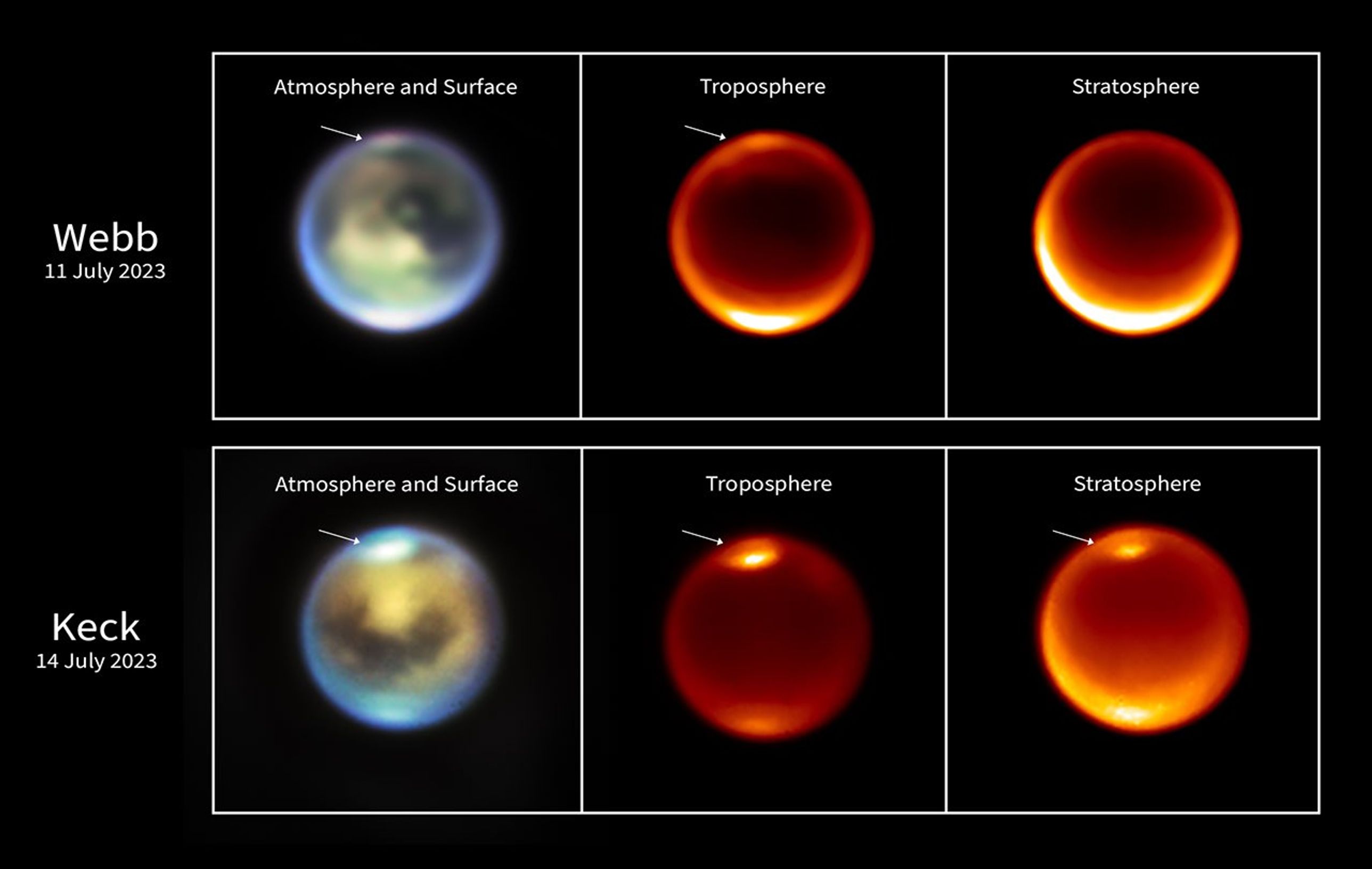A Major Discovery on Titan: A URCA Researcher at the Heart of the James Webb Mission
Titan, Saturn’s largest moon, continues to intrigue scientists around the world. This distant, frozen world, wrapped in a thick orange haze, has a dense atmosphere, lakes, seas, clouds, and even… rain! But here, water is replaced by liquid methane. Thanks to the James Webb Space Telescope, an international team of researchers – including Pascal Rannou, professor at the University of Reims Champagne-Ardenne – has just published new insights into this extraordinary planet-moon in the prestigious journal Nature.
“This is why we do research: to be the first to uncover new information about our subject of study. This article only scratches the surface and opens perspectives that will keep me busy for quite some time,” says Pascal Rannou.
Titan: Partly Cloudy with Methane Showers
Observations from the James Webb Space Telescope, combined with those of the Keck II telescope in Hawaii, revealed methane clouds in Titan’s northern hemisphere, currently in summer. Even more striking, these clouds were seen rising in altitude over several days, indicating atmospheric convection – a vertical movement of moisture-laden air, similar to the process that forms thunderstorms on Earth.
This region is home to Titan’s large methane lakes and seas, whose total surface area rivals that of North America’s Great Lakes. These liquid bodies evaporate, form clouds, and sometimes fall back as rain. Titan therefore has a real weather system – though a frozen one!
“Titan is the only other place in our solar system with weather comparable to Earth’s, with clouds and precipitation,” explains Conor Nixon, NASA researcher and lead author of the study published in Nature Astronomy.
Organic Chemistry in Action
Titan fascinates scientists not only for its climate but also for its potential links to the origins of life. It is rich in organic molecules – the building blocks of life. The study marks a groundbreaking step: the first detection of the methyl radical (CH₃), a key molecule in methane chemistry.
This detection confirms that active chemistry is taking place in Titan’s atmosphere, rather than being static. Such reactions are crucial to understanding how complex molecules form – and perhaps how life could emerge elsewhere.
Reims Expertise in an International Space Mission
Pascal Rannou, researcher at GSMA (UMR CNRS 7331) and a recognized expert in planetary science, played a central role in this discovery.
“This kind of work, by nature international, is always an opportunity to develop contacts and collaborations with colleagues from different backgrounds (here, American and European),” he notes.
This collaboration with NASA, international observatories, and other research teams highlights the growing recognition of URCA’s scientific expertise at the very heart of major space missions.
In Short: What is Titan?
- A satellite of Saturn larger than Mercury
- Diameter: 5,150 km
- Dense atmosphere of nitrogen and methane
- Seas, lakes, and rain made of liquid methane
- Average temperature: –180 °C
- An organic world to watch closely
Image credit below: NASA, ESA, CSA, STScI, and W.M. Keck Observatories
